The Mill, built and fitted from 1783 to 1788, was never used for grinding grain, contrary to what is often argued. The wheel is driven by a stream derived from the Grand Lake and is only a decorative element. No mechanism or wheel were installed in the factory. The interior decoration was simple and neat.
The Queen in riding costume by Jean-Baptiste André Gautier-Dagoty (attributed), Queen Marie Antoinette of France, 1778 in the background is the temple of Love
Marie Antoinette was very much like Princess Diana of
One of the first things I do after I get off of the train at Versailles
Sometimes the ducks come to feed also.
And Marie Antoinette’s Swan
As you can see when word gets out I have French bread there can be a feeding frenzy
There seams to be more fish then water here. I think theses are catfish. I’m trying not to think about a friend catfish poboy sandwich!
Adolf Ulrich Wertmüller, Marie Antoinette with her children, Princess Marie Therese Charlotte of France and Dauphin Louis Joseph of France, 1785.

The Marlborough Tower, built in the form of a lighthouse, was initially named "Fishery Tower". The basement is used for storage.
Louise Élisabeth Vigée Le Brun, Marie Antoinette en chemise, 1786. The Queen like to wear thin cotton dresses that scandalized the court; She was accused of going out in her chemise {a undergarment} She would go thus attired to watch her strawberries and cherries being picked, to see corn being ground, laundry washed, and cows milked. She drank fresh milk from Sevres porcelain bowls, and would lead her lambs into the fields on silk ribbons.
Archduchess Marie Louise of Austria was great niece of Marie
Initially, there were two dairies: the "Preparation Dairy" which produced creams and cheeses, is located near the tower. It was where the milk was skimmed and the butter beaten. In the second dairy, the Queen tasted the dairy products from tables of veined white marble supported by fourteen carved consoles and arranged around the room.
Milk bowl Porcelain from Marie Antoinette's porcelain factory Rue Thiroux use by her at this Dairy
Initially, there were two dairies: the "Preparation Dairy" which produced creams and cheeses, is located near the tower. It was where the milk was skimmed and the butter beaten. In the second dairy, the Queen tasted the dairy products from tables of veined white marble supported by fourteen carved consoles and arranged around the room.
Initially, there were two dairies: the "Preparation Dairy" which produced creams and cheeses, is located near the tower. It was where the milk was skimmed and the butter beaten. In the second dairy, the Queen tasted the dairy products from tables of veined white marble supported by fourteen carved consoles and arranged around the room.
Initially, there were two dairies: the "Preparation Dairy" which produced creams and cheeses, is located near the tower. It was where the milk was skimmed and the butter beaten. In the second dairy, the Queen tasted the dairy products from tables of veined white marble supported by fourteen carved consoles and arranged around the room.
Joseph Caraud, Marie Antoinette and Louis XVI with Madame de Lamballe at the Hameau, with her house in the background.
Beyond the lake to the north, the hameau was sited like a garden stage set, initially inspired in its grouping and vernacular building by Dutch and Flemish genre paintings, philosophically influenced by Rousseau's cult of "nature", and reflecting exactly contemporary picturesque garden principles set forth by Claude-Henri Watelet and by ideas of the philosophes, their "radical notions co-opted into innocent forms of pleasure and ingenious decoration" as William Adams has pointed out. Artists played a more direct role in French picturesque than they probably had done in
The Queen's house and billiard room is located in the centre of the hamlet. Consisting of two floors, the upper level comprises the petit salon, also known as the "room of the nobles", an anteroom in the form of a "Chinese cabinet" and the large living room with wood panelling hung with tapestries of Swiss style in embroidered wool. From the room's six windows, the Queen could easily control the work fields and activity of the hamlet. Access is via the staircase of the round tower. At the center of the room is a harpsichord which Marie Antoinette loved to play. On the ground floor, paved with single slabs of stone, the building includes a backgammon room and a dining room. The lyre-backed chairs in mahogany lined with green morocco, were created by Georges Jacob. To the left, another building housing the billiard room is connected to the Queen's house by a wooden gallery decorated with trellises and twelve hundred St. Clement faience pots, marked in the blue figures of the Queen. Upstairs, a small apartment which seems to have been inhabited by the architect Richard Mique, has five rooms including a library. Despite the rustic appearance of facades, the interior finish and furnishings are luxurious and have been created by the carpenter Georges Jacob and the ébéniste Jean-Henri Riesener.
The main house where Marie-Antoinette played at farming.
Outside wall of the Dairy
The Marlborough Tower, built in the form of a lighthouse, was initially named "Fishery Tower". The basement is used for storage.
Ludwig Guttenbrunn, Marie Therese and Louis Charles with temple of Love in background , 1788.Marie-Antoinette wanted her children to have one place where they could be themselves. Like many "home-schooling" parents of today, Louis XVI and Marie-Antoinette feared that their children would grow up too isolated from the real world. The farm was a "safe" environment where they could get an idea of how ordinary people lived, see the livestock, learn about plants and nature. Most of all, it was a place for the children to play.
Marie Antoinette insisted on living as she wished. The Queen sought refuge in peasant life, milking cows or sheep carefully maintained and cleaned by the servants. Marie Antoinette found the heaven of privacy that enabled her to escape from the rigours of court etiquette. Nobody could come to Marie Antoinette’s village or grounds without her invitation. Dressed as a peasant in a muslin dress and straw hat, a light switch in her hand, with her ladies, she used the buckets of Sevres porcelain specially decorated with her arms by the Manufacture Royale.
One of Marie Antoinette’s favorite flowers Lilac are planted all over the grounds
The Queen insisted on real animals to show her children. Cows named Brunette and Blanchette sported silk satin pink and blue bows tied around there necks. Animals from Switzerland Switzerland
Victoire Armande Josèphe de Rohan, Princess of Guéméné, Governess of Madame Royale. On Sundays the Queen received visits from her children and their governesses. Refusing in this way to follow the dictates of her rank.
Charles Emmanuel Leclerq, Marie Antoinette and her children, Louis Joseph, Dauphin of France and daughter Madame Royale overlooked by a bust of Louis XVI, 1781.
Two love doves
They were too cute!!!!
In spite of its idyllic appearance, the hamlet was a real farm, fully managed by a farmer appointed by the Queen, with its vineyards, fields, orchards and vegetable gardens producing fruit and vegetables consumed by the royal table. Animals from Switzerland, according to the instructions of the Queen, were raised on the farm. For this reason the place was often called "the Swiss hamlet".
The Queen sought refuge in peasant life, milking cows or sheep carefully maintained and cleaned by the servants. Dressed as a peasant in a muslin dress and straw hat, a light switch in her hand, with her ladies, she used the buckets of Sevres porcelain specially decorated his arms by the Manufacture Royale. The place was completely enclosed by fences and walls, and only intimates of the Queen were allowed to access it. During the Revolution, "a misogynistic, nationalistic and class-driven polemic swirled around the hameau, which had previously seemed a harmless agglomeration of playhouses in which to act out a Boucher pastorale." The queen was accused by many of being frivolous, and found herself a target of innuendos, jealousy and gossip throughout her reign. Although for Marie Antoinette, the hameau was an escape from the regulated life of the Court at Versailles, in the eyes of French people, the queen seemed to be merely amusing herself.
The queen invited several destitute families to live and work in the hameau. She saw the farm as a way that her children could experience the healthiness of country life, without actually leaving Versailles. Life in the palace had little or no privacy for the royal family
The farm was set slightly away from the hamlet to make it a going concern. The farmer appointed by the Queen to run the farm and dairy was Valy Bussard who arrived 14 June, 1785 from Touraine. His family joined him in December.
Roosters and hens of various species were brought from the west of France and settled in the aviary in 1785.
The farm was set slightly away from the hamlet to make it a going concern. The farmer appointed by the Queen to run the farm and dairy was Valy Bussard who arrived 14 June, 1785 from Touraine. His family joined him in December.
The farm was set slightly away from the hamlet to make it a going concern. The farmer appointed by the Queen to run the farm and dairy was Valy Bussard who arrived 14 June, 1785 from Touraine. His family joined him in December.
The Marlborough Tower, built in the form of a lighthouse, was initially named "Fishery Tower". The basement is used for storage.
Between 1783 and 1787, the Hamlet was thus created in the spirit of a true Norman village, with eleven houses spread out around the Big lake. Five of them were reserved for the use of the Queen and her guests: the Queen’s House, Billiard Room, Boudoir, Mill and Refreshments Dairy. While four houses were reserved for the occupancy of the peasants: the Farm and its annexes, the Barn, the Dovecote and Preparation Dairy. The Farm was located outside the village and sheltered a varied livestock: a small herd of eight cows and a bull, ten goats and pigeons. One house was reserved for domestic use: the Warming Room, where the dishes were prepared for the dinners given at the Queen’s House or at the Mill.
Countless canalizations drew off enough water from Marly to create a lake which became the centre of the whole village
Ludwig Guttenbrunn, Queen Marie Antoinette at play as Erato, 1788.
The Baron de Besenval in his cabinet by Danloux. He was part of the queen's inner circle along with the Polignacs. He had an acid toungue and a pipeline into all the most titilating gossip at court that he knew could be relied upon to keep the queen amused for hours.
A swan trying to go to sleep on the banks of the lake
Between 1783 and 1787, the Hamlet was thus created in the spirit of a true Norman village, with eleven houses spread out around the Big lake. Five of them were reserved for the use of the Queen and her guests: the Queen’s House, Billiard Room, Boudoir, Mill and Refreshments Dairy. While four houses were reserved for the occupancy of the peasants: the Farm and its annexes, the Barn, the Dovecote and Preparation Dairy. The Farm was located outside the village and sheltered a varied livestock: a small herd of eight cows and a bull, ten goats and pigeons. One house was reserved for domestic use: the Warming Room, where the dishes were prepared for the dinners given at the Queen’s House or at the Mill.
Depiction of an evening fête given by the queen in honour of the visit of her brother the Emperor Joseph II of Austria to Versailles in 1778. The site of this party is the English garden at Petit Trianon.
François Dumont, Miniature of Marie Antoinette with Madame Royale and Louis-Charles, early 1790.
























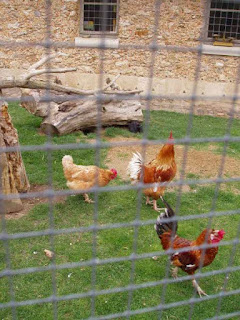
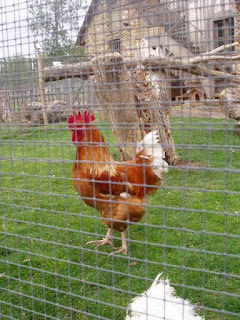






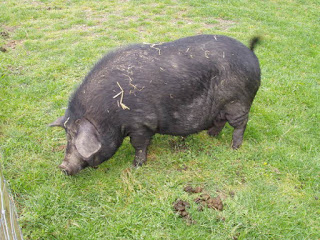

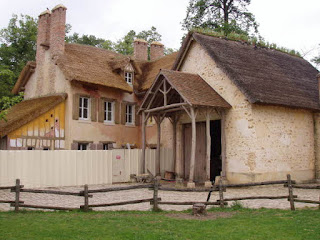

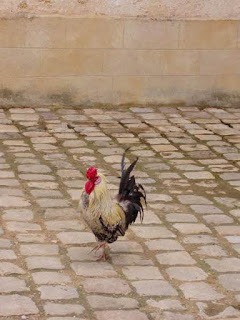






























Wonderful post... some interesting duplications though... I love all the buildings and am ashamed that I have never gone there when I am in the hood. Look what I am missing!! I just love the old dairies.. they are gorgeous, aren't they??
ReplyDeleteThanks! look out for part 2, I go into more detail about the buildings at the Hameau. Most of them have fake cracks, half-timbering and splits painted onto the stucco outside. The next time you are at Versailles you must go. Remember to take a lunch as you can eat on a bench right next to the Queens cottage. Yes the dairies are wonderful, have you been to the one at Rambouillet?
ReplyDeleteThanks for this post! You may see from your stats that I was looking for Marie, and I needed to find out the date of when her riding dress was painted. This post is really informative, I can't believe all of the hamlet where she played as a 'peasant' are still there!
ReplyDeleteYou are welcome. The Hamlet is a fabulous place. You should visit it one day if you have not been there. It would be like going back in time to the 18th century.
ReplyDelete